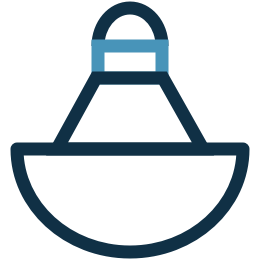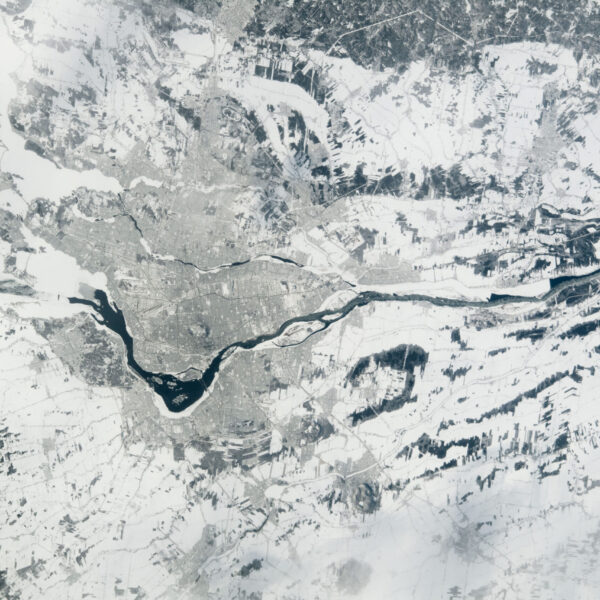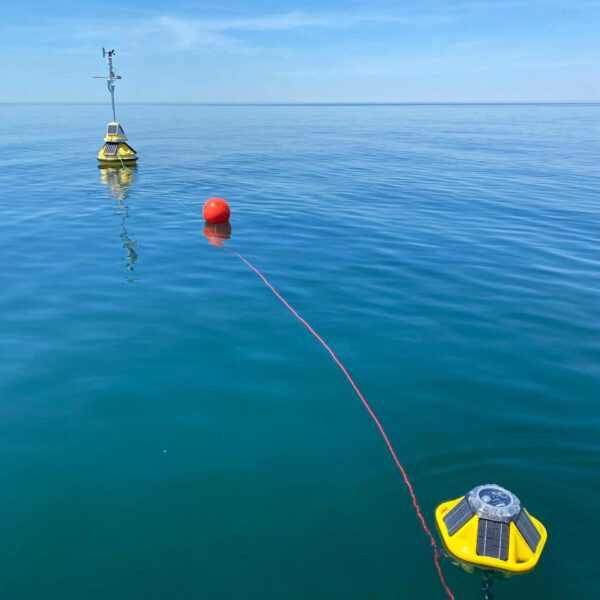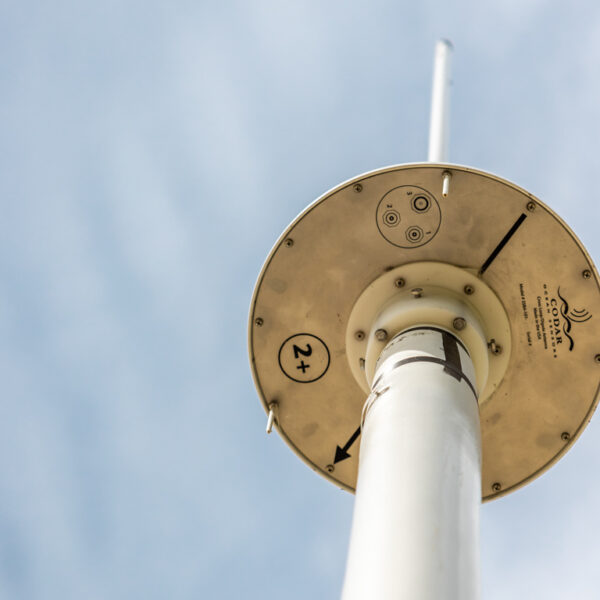Year-Round Observations
planning, projects, updates, and progress
GLOS support projects aimed at increasing service delivery through expansion of year-round observations and analysis of their impact.
Year-Round and Winter Observations
Much of the real-time observing equipment in the Great Lakes is seasonal – getting deployed in spring and recovered in fall. This is because the harsh Great Lakes winter conditions are not favorable for the equipment, particularly during icy periods. So while this seasonality of equipment is important, it also creates a gap in our near real-time information of the Great Lakes during the “shoulder” seasons (late fall and early spring) and winter.
In recent years, there have been advances to improve robustness of the equipment and ways we transmit the data. GLOS plans to continue to support these improvements to establish year-round observing sites where anyone can access up-to-date condition information of the Lakes.
Projects
Ice Thickness Monitoring
To support year round observations, in an effort to better coordinate and deploy observing assets and sensors, GLOS is establishing ice thickness data collection.
GLOS proposes to develop a community science data collection that is closely tied to the needs of hydrodynamic modelers. Initial stages of the project will be spent developing collection protocols and a simple data submission form, initial piloting of the work, and data delivery to the modelers for evaluation. Throughout the project GLOS will coordinate with partners engaged in year-round observations to gather information on potential mechanisms to sustain the year-round observing capacity developed with this funding.
Co-located buoy developments
GLOS is supporting deployment of winter buoys at 6 locations that have existing, long-term summer buoy deployment. These winter buoy deployments will allow for creation of near real-time year-round datasets, which are of critical importance for the region.
High Frequency Radar (HFR)
Two high frequency radars (HFR) are deployed in Mackinac Straits to provide real-time access to water current maps and movements across the Straits. The HFR, a relatively new tool for the Great Lakes region, is leveraged extensively in other coastal areas. Public and ecosystem health, as well as water security, will benefit from the time-sensitive current maps the HFR can produce to serve as a resource in the event of a spill or toxin transport event.
Updates

Two winter observation projects were funded.
- A co-led effort between Colorado School of Mines and MTU GLRC resulted in a wave buoy being deployed at 3 National Data Buoy Center buoy locations. As the NDBC buoys were recovered for winter, a Sofar Spotter buoy was deployed at the same site to provide year-round coverage of waves, sea surface temperature, and air temperature. These deployments were very popular with regional Weather Forecast Offices and other end users, so GLOS has chosen to continue this work as part of the Inflation Reduction Act funding that GLOS has received.
- Upstate Freshwater Institute modified their 3 summer buoys along the southern shoreline of Lake Ontario to be “winter ready” and deployed them for winter 2023-24 to obtain a year-round dataset of sub-surface temperatures, water currents, and turbidity.

Michigan Technological University’s (MTU) Great Lakes Research Center (GLRC) upgraded 3 buoy sites. Two buoys received refurbishment, including new hulls. One site was upgraded from a Sofar Spotter buoy to a full-sized metocean buoy based on positive feedback from local stakeholders and anticipated value for the future.

Two of University of Michigan’s Cooperative Institute for Great Lakes Research (CIGLR) buoys were upgraded. Summer of 2024, two of its most popular, Ludington and Little Traverse Bay, received a complete refurbishment to make sure they are equipped for many years to come.



